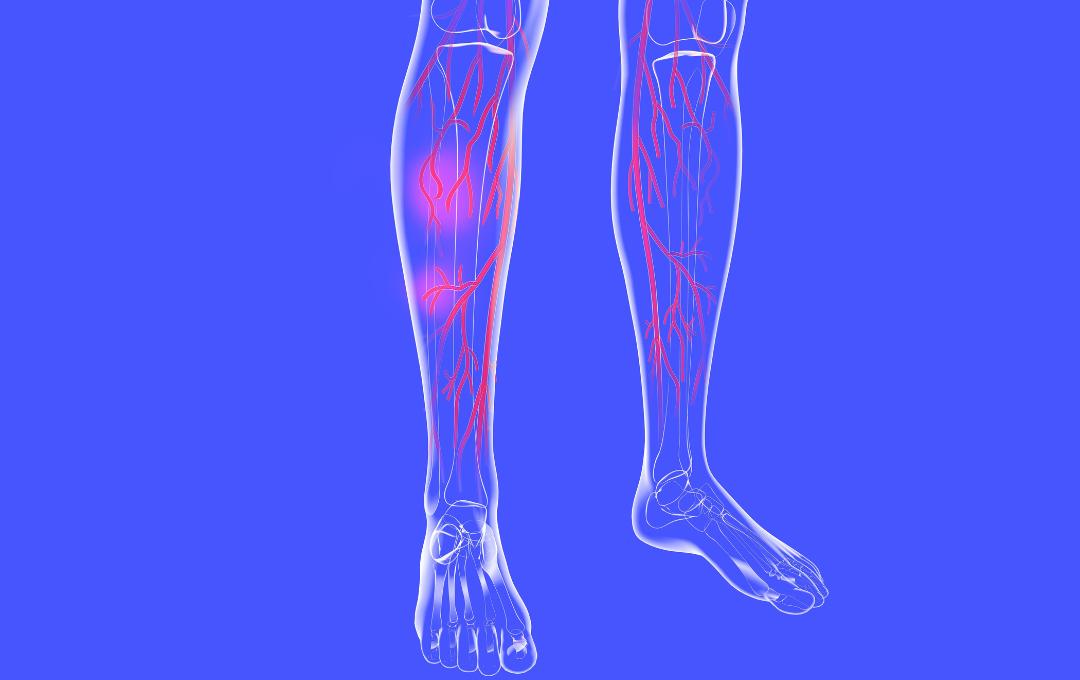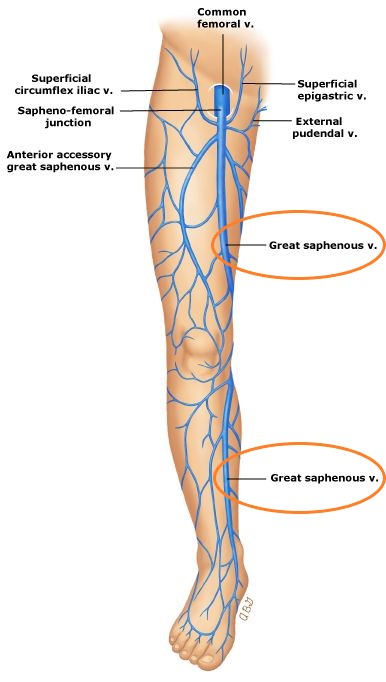
The great saphenous (sa-fuh-nuhs) vein plays a key role in blood circulation. As the longest vein in the body, it carries blood from the legs back toward the heart, using one-way valves to maintain momentum. When these valves become damaged or weakened, the great saphenous vein (GSV) becomes more prone to a condition called vein disease, which can lead to the development of varicose veins.
It’s important to understand how the GSV works to either prevent vein disease or slow its progression. Below is everything you need to know about the great saphenous vein and how vein disease impacts it.
Where is the Great Saphenous Vein?
The great saphenous vein (GSV) runs the length of your leg from your foot to your thigh and connects to the deep femoral vein near your groin. You can see this vein from underneath the skin of your inner ankle.
The GSV is a superficial vein, meaning that it’s closer to the skin’s surface than deep veins. That’s why it’s easier to spot the GSV from underneath the skin compared to the deep veins. The GSV will carry blood from tissues near the skin’s surface to deeper veins, which are then carried back toward the heart.
How Vein Disease Affects the Great Saphenous Vein
The great saphenous vein is especially vulnerable to vein disease because it has multiple valves that work against gravity to push blood back toward the heart. Once these valves are damaged, the saphenous vein malfunctions and causes blood to pool in the legs.
Common symptoms of vein disease include leg pain, swelling, aching, and fatigue, which can range from mild to severe. As the condition progresses, these symptoms worsen and can start to impact a person’s daily activities.
When left untreated, vein disease can lead to dangerous health issues like blood clots and . While blood clots in the greater saphenous vein are typically harmless, they have the potential to turn into deep vein thrombosis, which can be life-threatening. Addressing vein disease symptoms early can help reduce the risk.
Check Your Symptoms with a Quiz
Treatment for Vein Disease in the Great Saphenous Vein
There are non-surgical treatments that can relieve great saphenous veins impacted by vein disease. USA Vein Clinics’ team of experienced specialists uses minimally invasive procedures to target the affected veins and close them, allowing blood to reroute through healthier veins. For example, Varithena uses foam to irritate a damaged saphenous vein, causing it to close and allowing blood to reroute through smaller saphenous veins.
Varithena is an office-based procedure that does not require general anesthesia or an extended hospital stay. People can go home the same day as their procedure. Additionally, a 2016 study published in Phlebology found that Varithena was effective at relieving leg pain, reduced mobility, and the appearance of varicose veins.
Explore Other Vein Disease Treatments
Schedule an Appointment at USA Vein Clinics
If vein disease is affecting your great saphenous vein, it’s likely you will need treatment to find relief. Finding the right provider can make a significant difference in your overall health and well-being. USA Vein Clinics’ team of vein specialists use an evidence-based approach to vein treatment, ensuring that patients receive the best care for their condition in any of their over 168 nationwide locations.
Vein treatment is typically covered by most major health insurance plans, including Medicare and Medicaid. Insurance verification is offered when you schedule an appointment to expedite the approval process. Affordable repayment plans are also available if you cannot receive coverage for vein treatment.
To get started toward healthier legs, schedule an appointment online or give us a call at 888.768.3467.

